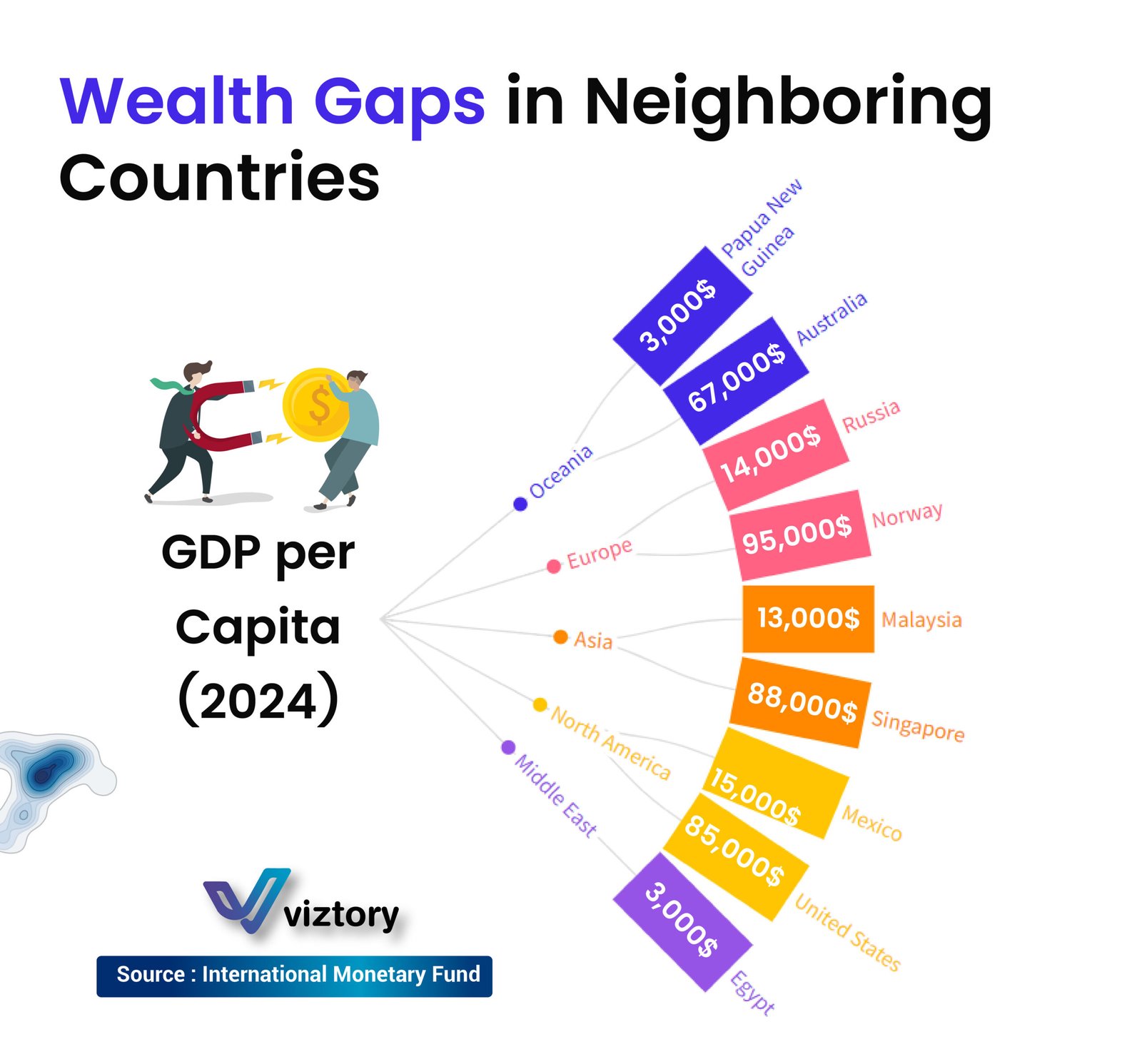Wealth Gaps in Neighboring Countries
-
Oct, Fri, 2024
Wealth Gaps in Neighboring Countries: Insights into GDP per Capita Disparities and Financial Inequality
The visualization highlights the GDP per capita in various countries, showing significant wealth disparities even between neighboring nations. For instance, in Oceania, Papua New Guinea’s GDP per capita stands at $3,000, compared to Australia’s $67,000. Similarly, in Europe, Russia’s GDP per capita of $14,000 is substantially lower than Norway’s $95,000. These wealth gaps reflect deep economic inequalities that impact not only individual wealth but also national economic stability and development.
Understanding Wealth Disparities Through GDP per Capita
GDP per capita serves as a crucial indicator of average economic output per person and reveals the wealth distribution across countries. The disparity between countries like Egypt, with a GDP per capita of $3,000, and the United States, with $85,000, underscores the vast differences in economic prosperity. Such disparities can affect access to quality education, healthcare, and infrastructure, creating a cycle of poverty and limiting economic mobility for those in lower-GDP nations.
The Financial Implications of Wealth Gaps
Significant wealth gaps can lead to financial instability and social challenges. For instance, countries with lower GDP per capita often struggle to attract foreign investment, which is critical for economic growth and development. Additionally, as Malaysia ($13,000) and Singapore ($88,000) demonstrate, even countries in close geographic proximity can experience vastly different economic outcomes. Wealth disparities can lead to migration, as individuals seek better opportunities in wealthier nations, affecting labor markets and economic policies.
The Role of Financial Policy in Reducing Inequality
Financial policies can help reduce wealth disparities by redistributing wealth and providing support to lower-income citizens. For instance, countries with higher GDP per capita often invest in social welfare programs and progressive taxation to narrow income gaps. However, these policies can be challenging to implement in nations with lower GDP per capita due to limited resources. As seen in Mexico ($15,000) and the United States ($85,000), variations in wealth can influence public policies, taxation, and government spending, which directly affect citizens’ quality of life.
Wealth Gaps and Their Influence on Economic Mobility
Economic mobility is closely tied to a country’s wealth. In countries with higher GDP per capita, individuals typically have greater access to education, healthcare, and job opportunities, which can improve economic mobility. Conversely, in nations like Papua New Guinea and Egypt, where GDP per capita is significantly lower, limited resources may restrict opportunities for upward mobility, perpetuating financial inequality.
Conclusion
The wealth gaps highlighted by GDP per capita disparities reveal the challenges and opportunities faced by nations at different economic levels. Addressing these disparities requires targeted financial policies and international cooperation to promote sustainable development and reduce economic inequality. By understanding and tackling the factors that contribute to wealth gaps, countries can work toward a more equitable financial future, fostering stability and prosperity for their citizens.

